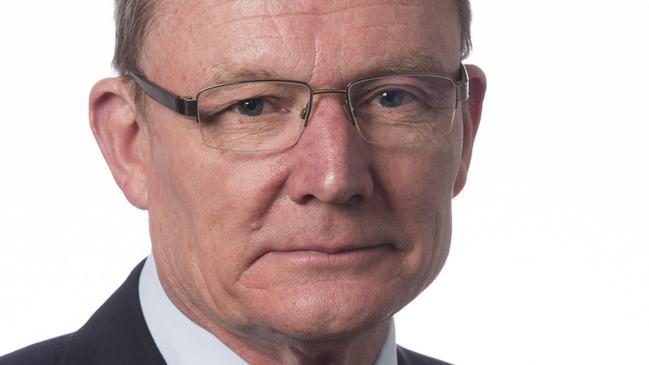ASIS investigated its Afghan spy ‘frontier culture’
Intelligence agency ASIS investigated its own spies over concerns they had formed a frontier culture in Afghanistan.

The Australian Secret Intelligence Service conducted a top secret inquiry into the conduct of its own intelligence officers amid concerns a “frontier culture’’ had taken hold among its spies in Afghanistan resulting in a handful of its senior officers being sacked or demoted.
The Weekend Australian can reveal that in 2015 then ASIS director-general Nick Warner ordered an internal review following a series of alcohol-fuelled incidents and concerns there had been significant lapses in discipline. In an unprecedented move, Mr Warner instituted an exhaustive inquiry into the service, which at that time was supplying crucial battlefield intelligence to Australian Special Forces troops in Afghanistan.
The review, which resulted in a small number of senior officers being sacked or demoted, found Australia’s spies had abused alcohol, fraternised improperly with SASR troops and had not been properly supervised while in the field.
The inquiry was also one of the catalysts for a larger and more serious investigation into alleged war crimes committed by Australian Special Forces soldiers, small teams of which worked intimately with ASIS officers, securing their safe houses and acting as bodyguards as they met their sources.
“They got caught up in a sort of frontier culture,’’ one source familiar with the review told The Weekend Australian. “That should and did raise alarm bells.’’
In one publicised incident in 2013, an SASR trooper pulled a weapon on a female ASIS officer after an alcohol-fuelled night in Kabul.
That incident prompted an inquiry by the Inspector-General of Intelligence and Security, the oversight body that polices the intelligence agencies, including ASIS.
ASIS director-general Paul Symon told The Weekend Australian: “This IGIS noted that while no physical injury resulted, the incident had the potential to cause serious injury — and that ASIS’s investigation of the incident had highlighted systemic issues, into which (the IGIS) would inquire’’.
News of the review underscores just how closely ASIS and the SASR worked together while on deployment in Afghanistan.
Like all insurgency conflicts, the war in Afghanistan was intelligence-led, meaning the military relied heavily on ASIS to identify Taliban soldiers and commanders.
ASIS had to quickly stand up a large, battlefield intelligence capability, something it had not had to do before.
One of its main jobs was to map the Taliban hierarchy and identify potential military targets.
Intelligence from ASIS’s human sources was “fused’’ with signals intelligence to identify and locate targets who would be placed on the so-called joint prioritised effects list, effectively a list of Taliban operatives marked for assassination or capture.
As the war progressed, ASIS’s presence grew and by 2012 Afghanistan had become the agency’s largest station.
As it grew, so did concerns about the agency’s culture and its close working relationship with the SASR.
After the IGIS had concluded its inquiry, ASIS launched its own wide-ranging investigation, which concluded in 2015.
There is no suggestion that ASIS officers engaged in criminal behaviour.
“It did highlight that there were some problems,’’ a source familiar with the report’s findings told The Weekend Australian. “Some of it was personality-based. There was concerning reports around the way they dealt with alcohol.’’
ASIS officers were allowed to consume alcohol while on deployment in Afghanistan, but only under certain circumstances.
The more serious breaches were understood to relate to poor supervision.
“Some of the more serious stuff was around supervisors who were in and out and weren’t fulfilling their duty,’’ the source said.
ASIS’s investigation into itself is understood to have been one of the triggers of the so-called Brereton review, which is exploring claims the SASR and the Commandos committed serious war crimes, including murdering Afghan civilians.
In the course of ASIS’s review into its own conduct, it is understood details emerged about alleged misbehaviour on the part of the SASR, which worked closely with ASIS officers in Afghanistan.
That prompted Mr Warner to send a version of his findings to the Chief of the Defence Force, Mark Binskin, as well as to the Inspector-General of Intelligence and Security.
Mr Warner is also understood to have copied in the Inspector- General of the Australian Defence Force, which subsequently launched its own investigation into possible war crimes.
Responsibility for that inquiry was delegated to NSW Supreme Court judge and former Army Reserve Major General Paul Brereton, who is expected to hand down his findings later this year.
Mr Symon declined to answer questions about the Warner review.
However, he acknowledged that after the gun-pulling incident, ASIS “conducted extensive internal inquiries’’.
“This included a preliminary investigation that helped instigate IGIS’s own inquiry, and subsequent inquiries further to IGIS’s recommendations,’’ Mr Symon told The Weekend Australian.
Mr Symon refused to say what, if any, information had been passed on to Defence but noted: “As a matter of course, was ASIS to become aware of allegations of misconduct by other Australian government officials, for example as a consequence of an internal inquiry, it would share those details with the agency concerned.’’



To join the conversation, please log in. Don't have an account? Register
Join the conversation, you are commenting as Logout